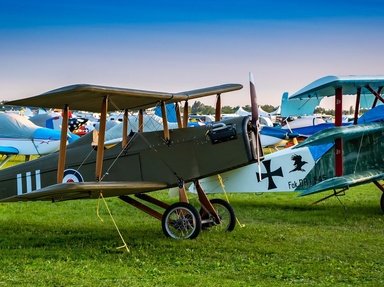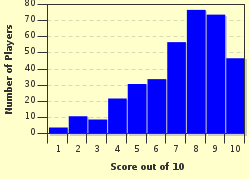Quiz Answer Key and Fun Facts
1. Aerial combat between German and British aircraft first occurred early in World War I. At that stage of the war, aircraft were unarmed but combat in the air did occur. How?
2. Aircraft design of the day meant aircrew were exposed to the elements in open cockpits. Despite the low maximum ceiling achievable by these aircraft compared to today, _______ starvation was a fairly common problem.
3. A British pilot could become an "ace" by shooting down enemy aircraft. What other action against the enemy counted towards the status of ace?
4. What innovation enabled pilots to improve their machine gun fire accuracy?
5. The use of bombs and the bombing of ground targets by aeroplanes of all sides in WWI was virtually unheard of.
6. Despite being issued to German aircrew towards the end of WWI, parachutes were denied to British aircrew for what main reason?
7. What catastrophe would a pilot in WWI risk when performing extreme aerial manoeuvres during a dogfight with enemy aircraft?
8. What item did some RFC aircrew take with them when flying missions?
9. The United States was involved in aerial combat against Germany over France during the First World War.
10. Finally, who do you think made the following quote in 1909 and foresaw the future of aerial combat? "The sky is about to become another battlefield no less important than the battlefields on land and sea ... In order to conquer the air, it is necessary to deprive the enemy of all means of flying, by striking at him in the air, at his bases of operation, or at his production centers. We had better get accustomed to this idea, and prepare ourselves".
Source: Author
keanet
This quiz was reviewed by FunTrivia editor
bloomsby before going online.
Any errors found in FunTrivia content are routinely corrected through our feedback system.


